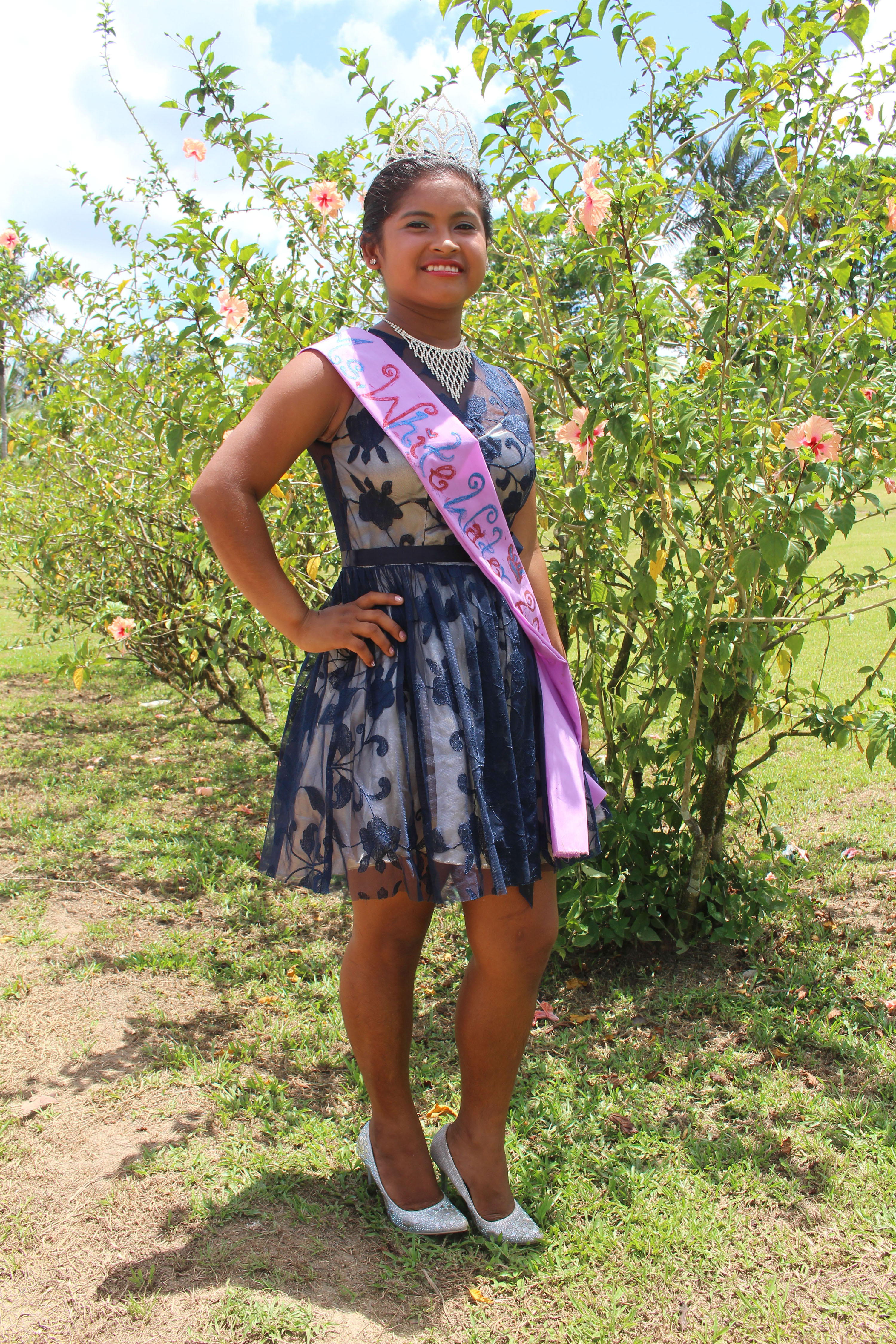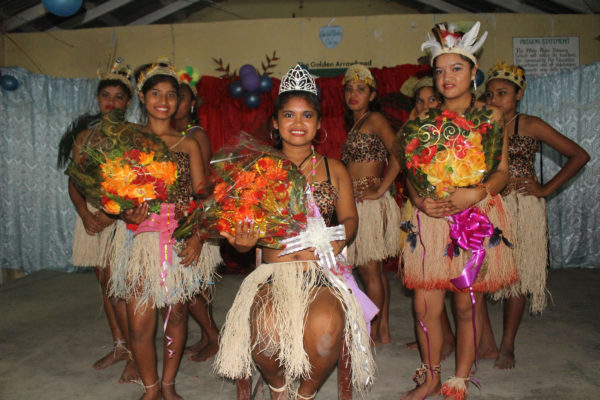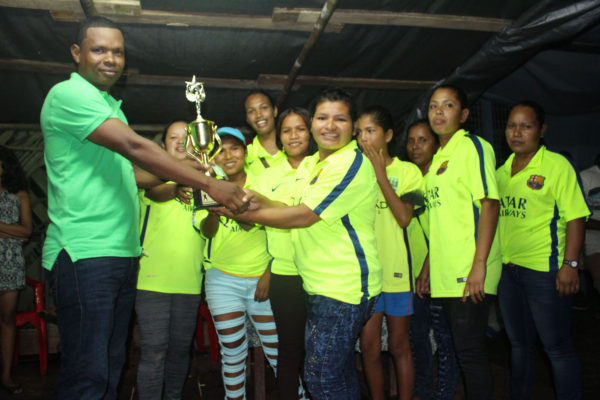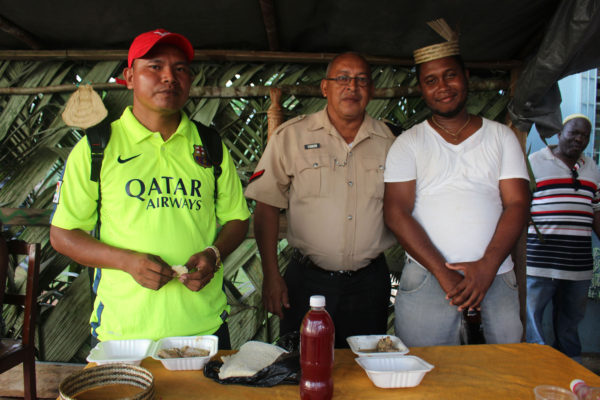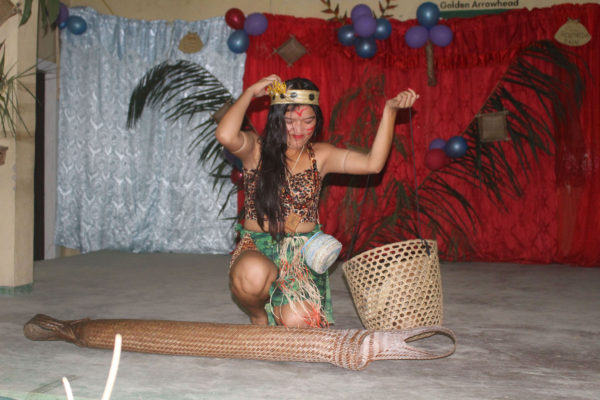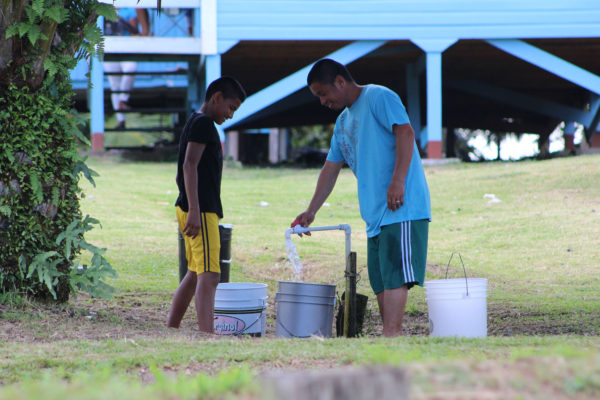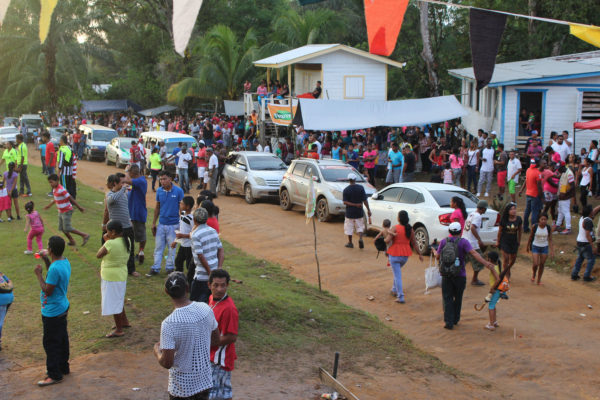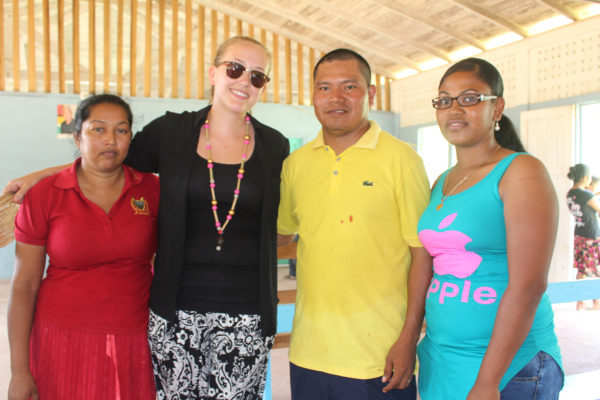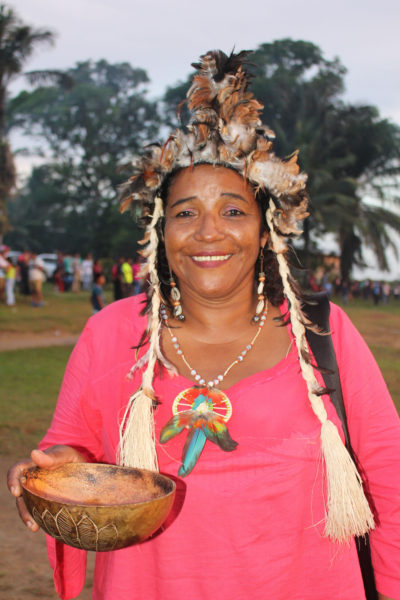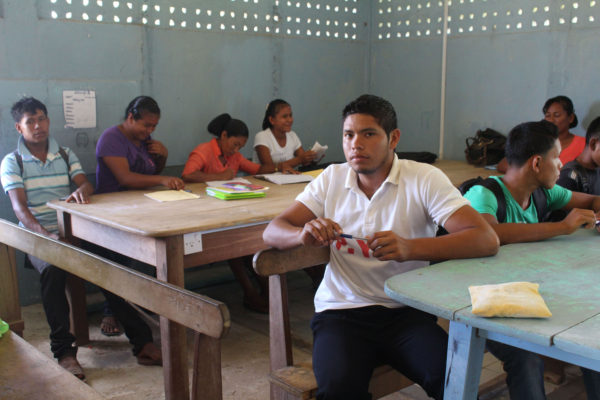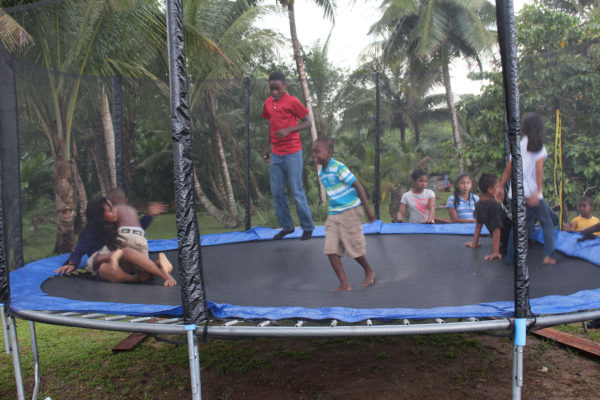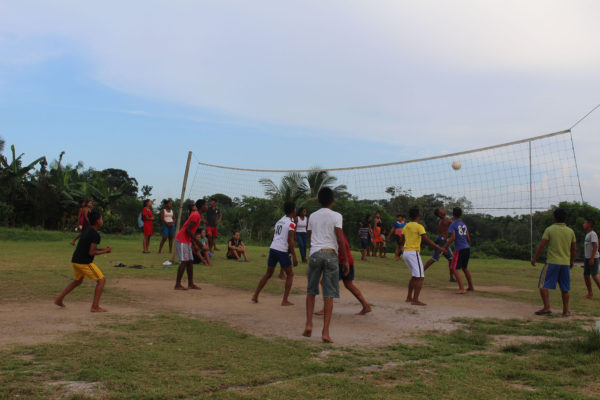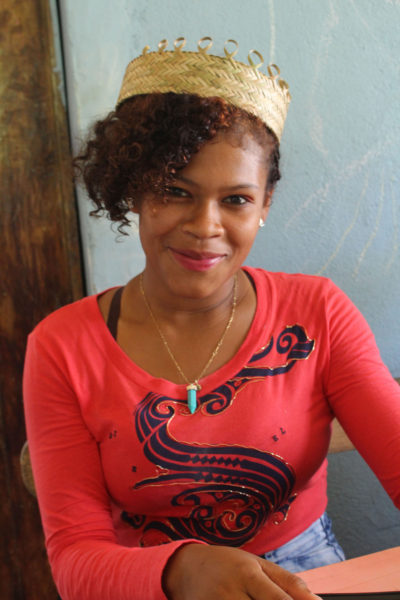Whitewater, the largest Indigenous settlement in the Mabaruma sub-region, got its name from a crystal stream that runs through it, though over time it has become less transparent. Close to the Venezuelan border, the village has officially been in existence since 1966 and though it began with just four families it has rapidly grown to a population of approximately 1,300 from 147 households. Whitewater comprises seven satellite areas: Central, Arucuru, Western, Blackwater, Kursima, Simarupa and Bamboo Landing. The two most common languages spoken in these areas are English and Warrau. Whitewater is pronounced ‘Ho Ko’ in Warrau.
The World Beyond Georgetown travelled one hour by plane from Ogle and another hour by taxi, along a treacherous red road, climbing hills that fall steep to valleys of forests, rocks and creeks below, to arrive at the Region One (Barima/Waini), North West District community.
The main economic activities in Whitewater are farming, fishing, hunting, craft-making and small-scale business. The farmers plant mainly peanuts, ginger, cassava and other ground provision.
At the time of our visit, preparations for heritage celebrations were in full swing. The eight contestants vying for the Miss Whitewater title were creating their traditional wear and learning more about their platforms. Other young women and young men were involved in football practice for upcoming competitions.
At the Multipurpose Hall, some young people gathered to learn vocational skills mostly related to craft-making from tibisiri and other materials.
House line either side of the white/brown sandy road in Whitewater Central; some were built by Food for the Poor Guyana Inc. Most of the houses have upgraded to wood, concrete and zinc from the troolie they were once built of, but within them, families still gather together to eat their cassava bread with Morocot (fish) pepperpot. There is a saying that those who eat the eye of the Morocot will never leave the bush and those who do always return.
Close to the road, are pipes, placed after every six houses or so, where villagers can fill water two times a week for a duration of two hours. The water schedule is not fixed so villagers can usually be seen turning the pipes on to check for water and when it does come they form a queue waiting with buckets to full their drums and tanks. Otherwise, they depend on the rain. If there is no rain or potable water, they can be seen fetching buckets or tubs of dirty clothes downhill to the creeks.
The village has no electricity and resorts to generators, solar panels and kerosene lamps for light. Local television channels are not available, so those equipped with televisions watch mostly DVDs. A few have dishes set up to catch the DirecTV channels from nearby Venezuela.
Before the World Beyond Georgetown got to talking with the villagers, we were invited to the village pageant, the cricket and football competitions and the highly anticipated ‘Wash Down’ where the finals of the competitions are held and the people party.
At the pageant, the girls, just teenagers and still very shy tried to put on brave faces as they stepped on stage in the introductory dance and the talent, evening wear, traditional wear and question and answer segments. In the end, Ann Samuels bested the other girls for the title.
At the ‘Wash Down’ people came from all over to celebrate. There was a wide display of head dresses, chains made from tibisiri with animal teeth pendants and such like.
The village also welcomed Kirstin McLeod, a US Peace Corps volunteer who will be stationed at the Whitewater Primary School for the next two years.
Cleveland DeSouza is Toshao of Whitewater, the sixth and the youngest at just 37 seven years old. He was born and raised right in Whitewater and has been Toshao since July 21, 2015.
“I remember growing up here as a little boy playing cricket,” DeSouza said. “The ball we played with was made of cloth. We rolled it up and made it into a ball or [cut a branch from] a corkwood tree… and shaped it into a ball.”
Since there was no school in Whitewater back then, DeSouza attended Wauna Primary. “We went to school with slippers on our feet and plastic bags for book bags. We [he and other siblings] had no lunch, but I got $20 for a cool down and $20 for chicken toe [salt sev or chicken foot]. That was my lunch. I never knew about changing my clothes every term. Only two times a year we were able to change our uniforms,” he said.
The village’s only source of water then was the nearby creeks. The one his family used was situated ten minutes away; they accessed the water there for washing, bathing, cooking and drinking.
“At that time we used flambeaux and kerosene lamps. The flambeaux we used outside when we wanted to go to the creeks or other places and the kerosene lamp or jumbie lamp as we called it remained in the house. That one was made from glass bottles or old tins,” he said.
As Toshao of Whitewater, DeSouza is responsible for the seven satellite areas. He lives in Whitewater Central and visits four of the six remaining areas once a month to keep meetings with the councillors and residents there. Councillors from the other two areas (Blackwater and Western) make the trip to Central whenever meetings are held. There are no schools close enough for the children at Kurisima, Simarupa and Bamboo Landing, so they remain at home. Once a quarter, health workers visit those areas.
Whenever DeSouza makes his trip, he tries to ensure that he’s accompanied by a health worker. When there are emergencies in these far off areas, he said, people will lift patients out until they find a tractor which will take them to somewhere they can board a bus; usually waiting for a bus can take more than an hour. Pregnant women birth their children at home.
(Continued next week)
